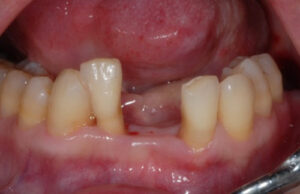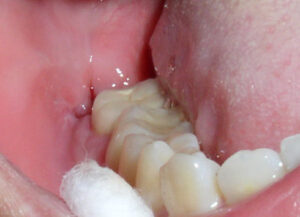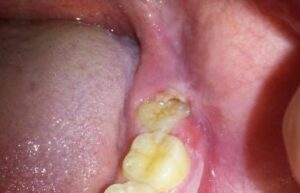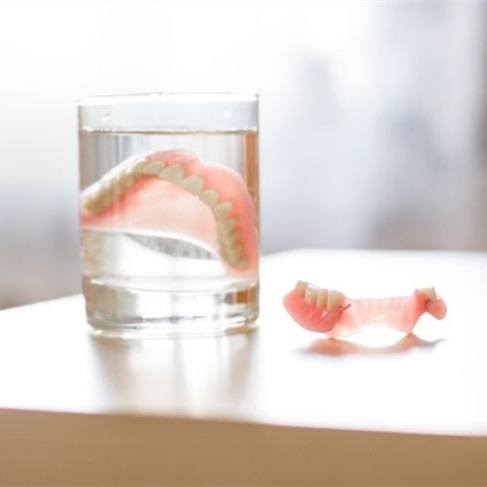Many people know that there is a tooth decay, but they have been dragging their teeth away from filling their teeth. One day they feel a real toothache and go to the hospital. The doctor says to do root canal treatment, and then you may be trapped… What is a root canal? treatment? Does root canal therapy work? So I will explain to you in detail, make sure it is easy to understand, let’s learn more together!
What is root canal therapy?
This is currently the most effective and common way to treat pulp disease and periapical disease. It can eliminate inflammation and its source of disease inside the tooth, prevent inflammation from aggravating and spreading, and cure it at the root.
Generally speaking, when your teeth encounter the following conditions:
· Tooth decay is broken to the inside of the tooth, and acute/chronic pulpitis caused by dental pulp or bacterial infection;
· Accidental bumps, trauma, rupture of blood vessels in the root tip and exposure of the dental nerve;
· Accidental bumps, trauma, rupture of the blood vessels in the root tip and exposure of the dental nerve;
You need root canal treatment.
The process is to clean the necrotic pulp inside the tooth first, then put in permanent anti-inflammatory and sterilizing drugs, and finally perform crown restoration to save the tooth.
Root canal treatment is to kill nerves?
To be precise, “killing nerves” is only one step of the root canal treatment process.
You know, tooth decay will eventually lead to unbearable pain, in fact, it hurts the nerves of the teeth. When tooth decay reaches a certain level, root canal treatment is needed, so nerve killing is a necessary step in root canal treatment.
Nerve killing refers to the inactivation of the diseased and necrotic tooth nerves, so that the pain during and after the root canal treatment will be reduced.
Is root canal treatment complicated?
Compared with fillings, root canal treatment requires several steps and processes, and generally requires 2-3 treatments to complete.
Seeing this, many people may be thinking, why root canal treatment is so complicated, and what kind of treatment is it, let us understand the specific steps of root canal treatment.
The first step: open the pith
First open a door on the tooth that leads directly to the inside and is easy to operate.
Step 2: Kill the nerves
The tooth nerves that have gone wrong will decay and ferment inside the teeth, causing serious infections and pain.
Therefore, we need to kill the dental nerve and then clean it out together with the necrotic tissue to eliminate inflammation.
The third step: filling
Put in permanent anti-inflammatory and sterilizing drugs to tightly fill the root canal to ensure that there will be no inflammation after the root canal.
Finally, an all-ceramic/ceramic crown is made for the teeth, which plays a protective role, and at the same time solves the problem of gray teeth and makes them more beautiful.
Does root canal treatment hurt?
All treatments related to teeth are painful. In fact, the root canal treatment process is not more uncomfortable than fillings. The application of dental local anesthesia can make the treatment process almost painless.
The medicine put inside the tooth after treatment may cause slight swelling without obvious pain. Even slight pain is normal, and it will gradually disappear afterwards.
Even some pain and discomfort can usually be controlled by taking conventional pain medication. If there is unrelieved pain or swelling, you should return to the clinic in time and ask the doctor to deal with it.
Do I have to make a crown after root canal treatment?
After root canal treatment, the tooth loses the nutrient supply from the pulp, just like a tree that loses its root, it slowly withers and becomes fragile, its color is gray, and it is more prone to splitting.
Therefore, in order to protect the fragile teeth, dentists will usually need to make a crown for the tooth after the root canal treatment is done to carry the burden of chewing.
How long can the root canal treatment be used for the posterior teeth?
Normal teeth require careful brushing, flossing, and regular cleaning of teeth twice a day to ensure their health.
Root canal treatment is the same as normal teeth, but you still need daily cleaning and care. As long as it is well maintained, even the teeth that have undergone root canal treatment can stay with you until you are old.
When tooth decay has just germinated, it can be treated with simple fillings; but when tooth decay invades the pulp and nerves, root canal treatment is necessary.
Therefore, if the tooth decay is discovered at the beginning, it can be treated in time, and a simple repair will not be a big problem.
However, when tooth decay occurs in the early stage, there is often no feeling. If you already feel sore or painful, it may be too late. At this time, you have to undergo root canal treatment, which is time-consuming, labor-intensive and costly.
How can we prevent this from happening? Very simple, regular oral checkups can solve the problem.
It is recommended to go to a professional dental clinic for a systematic oral examination at least 6 months or 1 year.
If the problem is repaired in the early stage of tooth decay, it will not develop to the point where it needs to infect the nerves, so that it does not have to endure hardship or spend more money.
Useful endodontic dental material for dentist reference:
Blue dental rotary files
https://www.dentallaboratorio.com/product/blue-dental-rotary-files/
Dental irrigation tips
https://www.dentallaboratorio.com/product/dental-irrigation-tips/
Rotary endodontic instruments
https://www.dentallaboratorio.com/product/rotary-endodontic-instruments/
Endodontic spreader
https://www.dentallaboratorio.com/product/endodontic-spreaders/








